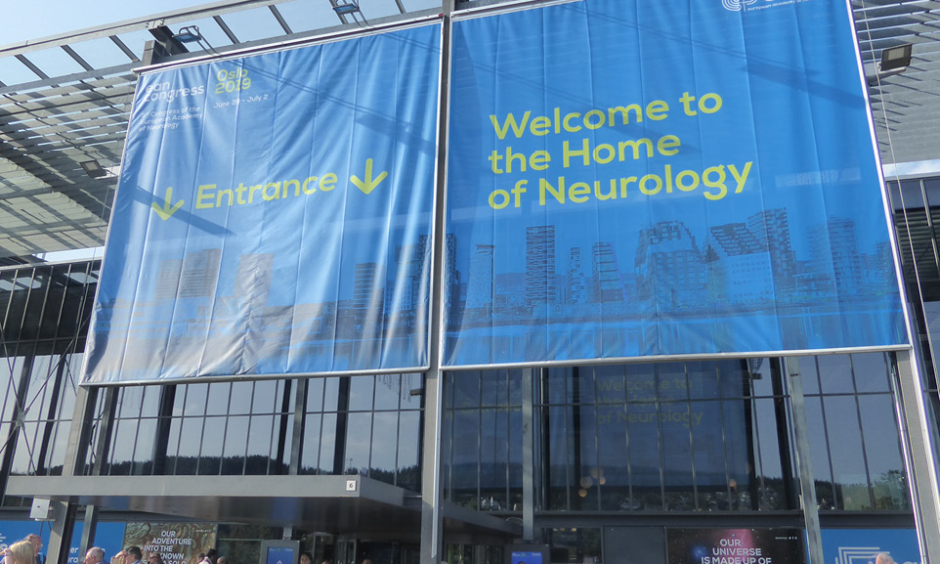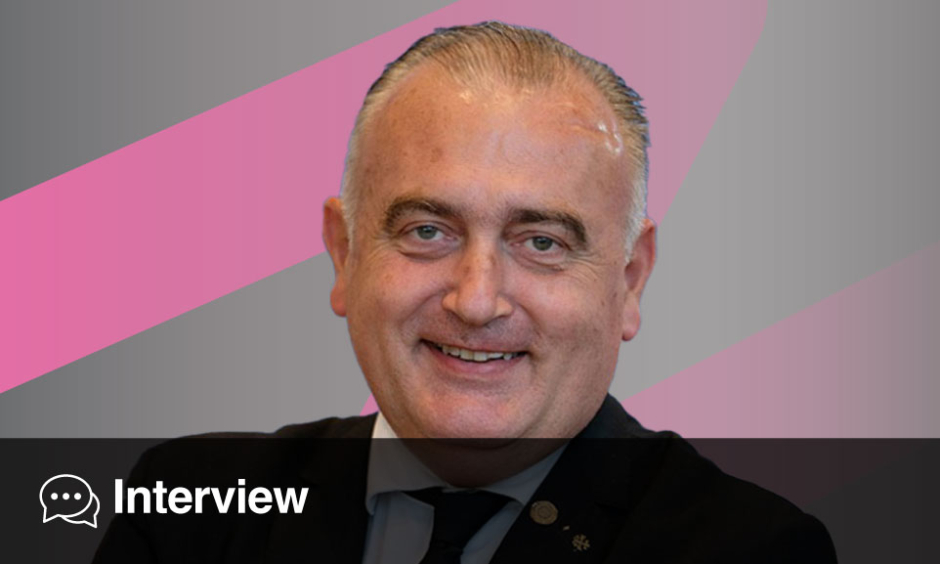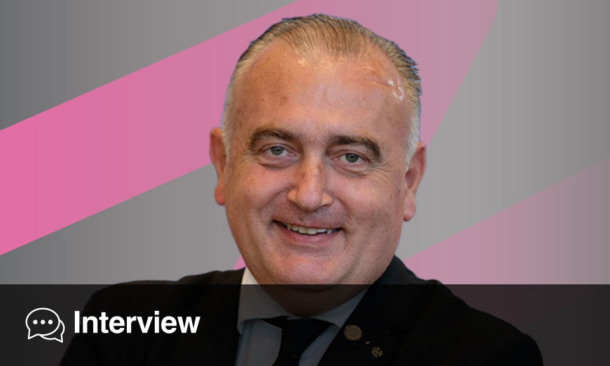Prof Antonio Federico | Chairman of the EAN Task Force for Rare Neurologic Diseases Past Chairman of the Scientific Committee of the European Academy of Neurology (EAN), Professor of Neurology, University of Siena, Siena, Italy, and Editor in Chief of Neurological Sciences.
![]()
What do you find the most inspiring aspect of working in neurology?
Neurology is the most important part of medicine because the nervous system co-ordinates all the other organ functions. Working in this field provides the opportunity to interact with clinics in addition to researchers in science and the humanities.
Throughout your time in the field, what is the biggest change you have seen in neurology?
The possibility to visually enter the brain through the use of new neuroimaging machines, which offers the possibility to learn about the basic mechanisms of nerve-nerve-other cell interactions. This is a huge change as they are the basis of many neurodegenerative diseases.
There are more than 5,000 rare diseases which the European Academy of Neurology (EAN) describe as a Pandora’s box of diseases. How do you begin to tackle such a vast number of diseases?
There is a predicted minimum of 5,000 rare diseases, and of these around 50% have a neurological involvement. It is impossible to have a good knowledge of all of them; however, there are many websites that are very useful for the suggestion of diagnostic hypotheses, which then need laboratory confirmation.
What do you think will be the biggest challenge for the EAN Task Force in raising awareness and improving knowledge of rare neurological diseases?
Interest on this topic has been growing over the last few years. There have been two reasons for this. Firstly, for the interest of patients, who often are reliant on orphan drugs. Secondly, to enable doctors to take better care of such patients.
The Task Force will aim to further increase the interest of these diseases in the neurology community in Europe. Furthermore, they will try to improve the care in many areas of Europe where the diagnosis and treatment of this group of diseases is not well-established or developed.
The EAN Task Force has many aims and objectives. Which of these has the Task Force already achieved and which are proving to be more challenging?
Amongst other successes, they have already been able to increase interest in rare neurological diseases in the younger generation from two perspectives: seeking to gain an understanding of the scientific mechanisms of the diseases, and developing new models of patient care.
The more challenging objective is to try to decrease the differences existing across the European countries. In fact, many differences are present between Western and Eastern European Countries, regarding the organisation of rare neurologic disease care; drug availability; facilities for diagnosis, because few molecular genetic laboratories exist; neonatal screening; plus more. I think that the recent organisation by European Union (EU) of the European Reference Networks (ERN) will be able to decrease the differences and establish several facilities for diagnosis and care. Some of the networks are mainly dedicated to rare neurological diseases: ERN rare neurological diseases, with special focus on neurodegenerative diseases, such as movement disorders, ataxia, choreas, atypical parkinsonism, leucodystrophies, dystonias, spastic paraparesis, frontotemporal dementias, and more; ERN neuromuscular diseases, focusing on rare forms of diseases of muscle and nerves, also including motor neuron diseases; and ERN rare forms of epilepsies.
You recently co-authored the paper ‘Changes in grey matter volume and functional connectivity in cluster headache versus migraine.’ What would you say is the take home message from this paper?
That the measuring of the grey matter volume and functional connectivity may be a useful tool for improving the diagnosis, and treatment, of many neurologic diseases.
How do you think the efforts against rare neurological diseases in Europe compare to those around the rest of the world?
Europe is on the same level as other Western countries, even better if we consider that over the last 2 years a big interest has been developed by the EU with the organisation of the ERN. This virtual network connects all the best centres in Europe and is an important means to improve general care organisation for rare diseases, in addition to diagnosis and research.
Along with teaching at the University of Siena and chairing the EAN Task Force, you have authored over 400 journal articles. What motivates you to keep working in the field of neurology? What part of your job do you enjoy most?
I have been involved in many different jobs to promote neurology: at the national level, as President of the Italian Society of Neurology; at the European level, as chair of the EAN Scientific Committee; and at the global level, as a member of several research groups of the World Federation of Neurology (WFN). I will also be the president of the 2021 World Congress of Neurology (WCN), which will be held in Rome, Italy. I have also been very much in charge when involved in research, which was mainly in neurogenetic and neurometabolic diseases, whether that has been teaching neurology to students or caring for neurological patients. All these experiences gave me great enthusiasm and motivation, and the opportunity to learn more and more about the nervous system functions and dysfunctions and the possibility of treatments.
As someone who has worked extensively in the field of neurology, what advice would you give to someone starting out today?
To be curious, to recognise our limited knowledge, to be modest about but enthusiastic for the new possibilities given by new methodologies and technologies, and to think very critically.
Prof Dr Riccardo Soffietti | Chairman of the EAN Education Committee
![]()
How have your training and work experiences led you to focus your career on neuro-oncology?
At the beginning of my career, I was trained in the neuropathology of brain tumours at the University of Torino, where I grew up. Then, after the development of clinical neuro-oncology in the late 1970s, following an experience in the USA, I started my activity as a neuro-oncologist with an involvement in the medical treatments of gliomas and other primary brain tumours.
Alongside your clinical role, you are an advisor to the European Medicines Agency (EMA). Please could you outline your work with the EMA?
I have acted as a consultant for the EMA in the process of approval of new drugs, such as anti-vascular endothelial growth factors agents for glioblastoma multiforme and new drugs for brain metastases.
When interviewed in 2018 at the 4th EAN Annual Meeting, you discussed new classifications implemented by the World Health Organization (WHO) regarding brain tumours. What impact have these 2016 classifications had on work within the clinic?
The novel histologic-molecular classification of gliomas has changed, in a radical way, the management of Grade II and III gliomas (lower grade gliomas). It is now is based on the evaluation not only of clinical factors but also molecular factors such as isocitrate dehydrogenase (IDH) 1 and 2 mutations and 1p/19q codeletion.
The aforementioned classifications were published in 2016 and are now 3 years old. Do you think that another update is needed?
I agree. Now the process is to continuously update the 2016 Classification whenever new molecular data of prognostic significance are released. An example is the further subdivision of IDH 1/2 wild-type Grade II and III gliomas into low and high-risk categories.
Over the last year have there been any research developments or discoveries that suggest a new wave of successful therapeutics are on the horizon?
Regarding glioblastomas, a potentially active new treatment could be a new molecule (depatux) for epidermal growth factor receptor (EGFR)-amplified glioblastomas. This is a fusion molecule: a combination of a monoclonal antibody against EGFR and a toxin to microtubules. We are waiting on the final results of European Organisation for Research and Treatment of Cancer (EORTC) and Radiation Therapy Oncology Group (RTOG) studies. Regarding lower grade gliomas, the inhibition of IDH mutations by either small molecules or vaccination is promising.
Personalised medicine is of growing importance in healthcare. How translatable do you feel personalised approaches are to neuro-oncology? Do you think personalised protocols should be changed in any way to make them more advantageous for your patients?
Apart from O6-methylguanine-DNA methyltransferase methylation in glioblastoma of the elderly, thus far we have not personalised approaches in brain tumours. In the near future, some rare subgroups of primary brain tumours could be specifically targeted by BRAF inhibitors (such as gangliogliomas) or sonic hedgehog inhibitors (medulloblastomas).
You are the chair of the EAN Education Committee. What drove you to become involved with this aspect of the work of EAN? What is, in your opinion, the greatest achievement of the committee under your tenure?
I have been involved in EAN activities for several years, and the EAN Board decided last year to appoint me as chair of the education committee. Among the several activities that were already ongoing, two new projects will be launched: a revision of the European Core Curriculum for the Neurology residency and the development of an e-platform for both residency and continuing medical education.
If you could direct the attention of the EAN to one neurological cancer, what would it be and why?
Rare brain tumours are of increasing interest, but neurological complications of systemic cancers (brain and leptomeningeal metastases, paraneoplastic neurological syndromes) are of utmost importance as well.
Lastly, if you could provide a new colleague with three pieces of advice for a successful career in neuro-oncology, what would they be?
- To attend a residency in neurology at a site where neuro-oncology is part of the clinical training.
- To get experience in neuropathology and translational research as well as in neuroimaging.
- To obtain neuro-oncological experience in a centre of excellence in Europe or the USA to refine their skills for both daily practice and research.








